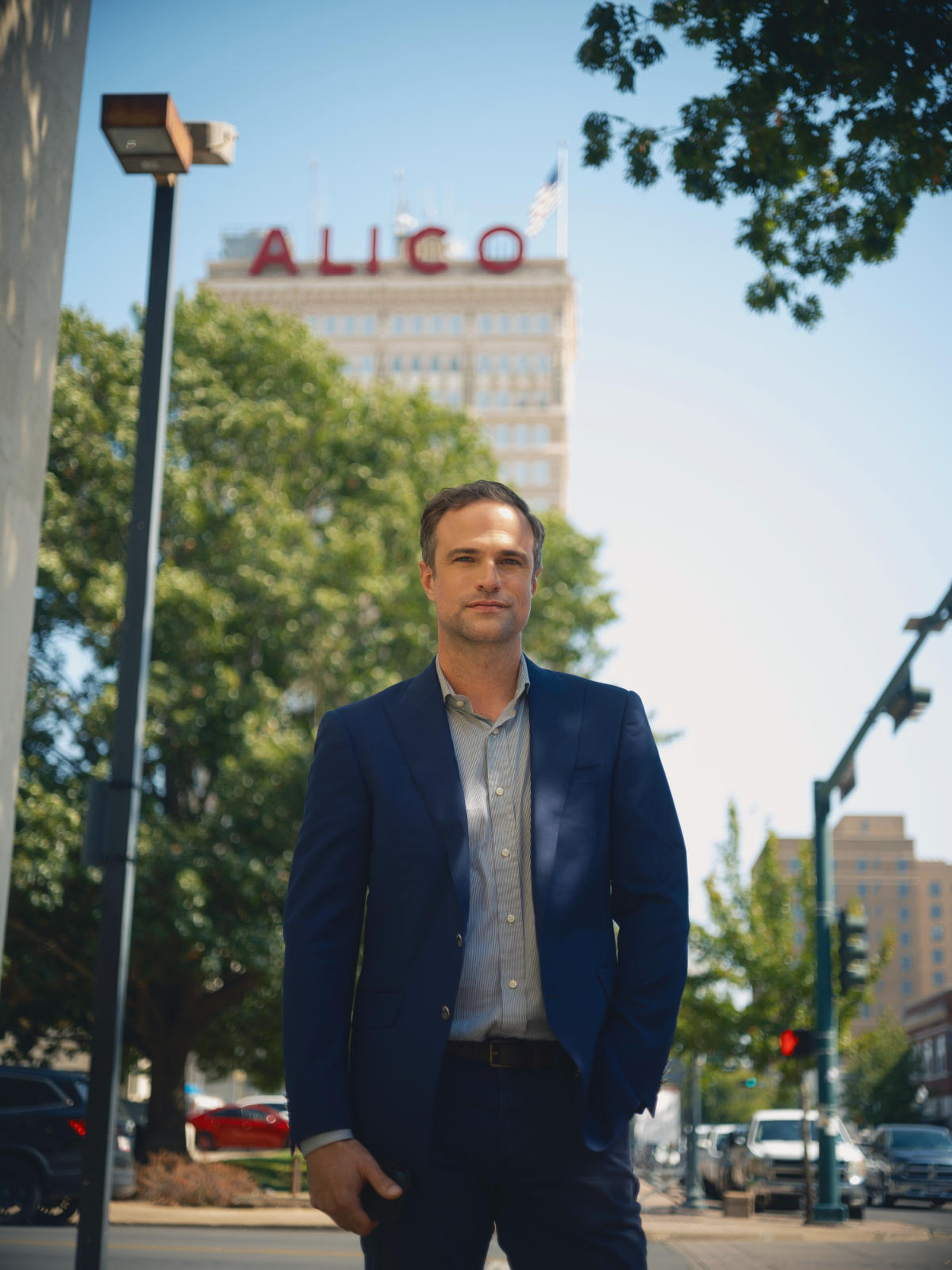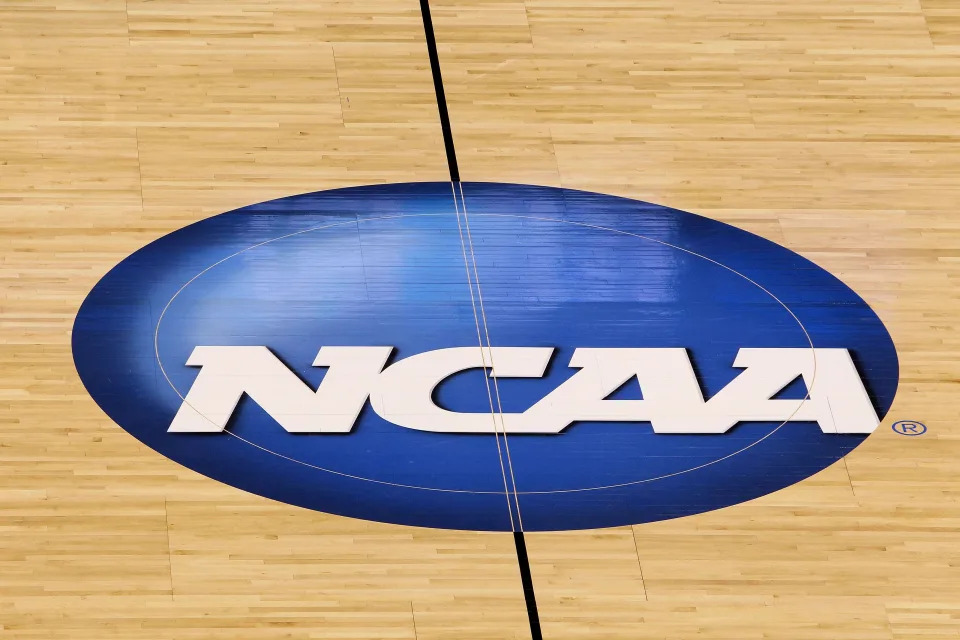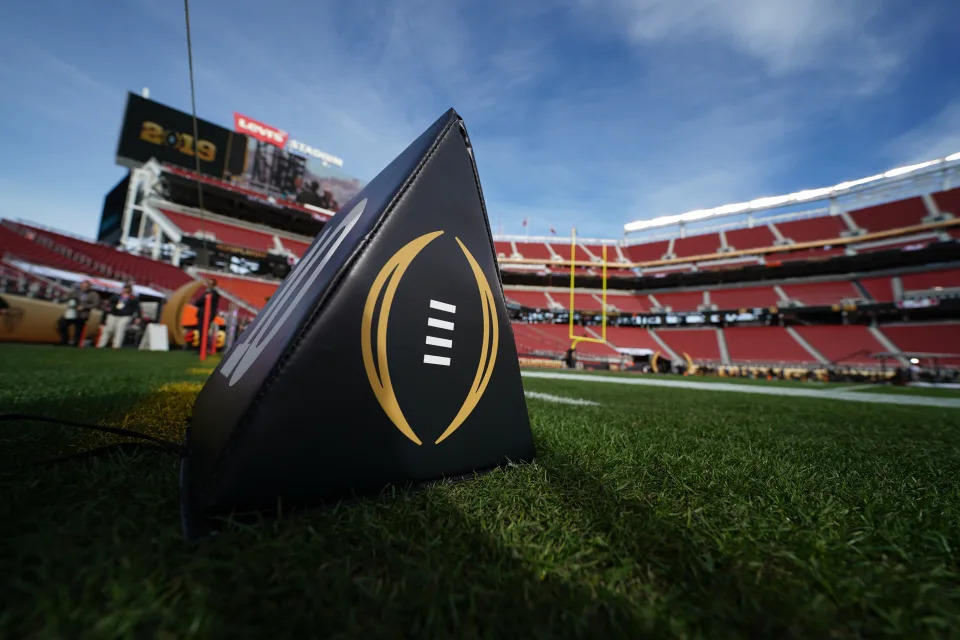Install the app
How to install the app on iOS
Follow along with the video below to see how to install our site as a web app on your home screen.

Note: This feature currently requires accessing the site using the built-in Safari browser.
-
New here? Register here now for access to all the forums, download game torrents, private messages, polls, Sportsbook, etc. Plus, stay connected and follow BP on Instagram @buckeyeplanet and Facebook.
You are using an out of date browser. It may not display this or other websites correctly.
You should upgrade or use an alternative browser.
You should upgrade or use an alternative browser.
Should semipro/college players be paid, or allowed to sell their stuff? (NIL and Revenue Sharing)
- Thread starter RCollett
- Start date
BuckBackHome
Wolverine is largest member of weasel family

Lawsuit reveals Gervon Dexter entered $436K NIL deal during senior year with UF football
According to a lawsuit filed in U.S. District Court, former UF DL Gervon Dexter's attorneys claim terms of his $436K NIL deal violated state law
www.gainesville.com
Upvote
0
BuckBackHome
Wolverine is largest member of weasel family

How Rich Donors and Loose Rules Are Transforming College Sports
The key to recruiting top college football players these days is not just a lavish training facility or a storied coach. It is ensuring the chance for them to hook up with a new type of operation that can pay them eye-popping sums, collected from wealthy boosters who can often write off the...
Someone paid a Michigan State player $750,000!?!?!
Upvote
0
They probably should have paid Keon Coleman more to stay…
How Rich Donors and Loose Rules Are Transforming College Sports
The key to recruiting top college football players these days is not just a lavish training facility or a storied coach. It is ensuring the chance for them to hook up with a new type of operation that can pay them eye-popping sums, collected from wealthy boosters who can often write off the...news.yahoo.com
Someone paid a Michigan State player $750,000!?!?!
Upvote
0
Is college athletics headed for The Great Split? 'We need to recreate or relaunch the NCAA'

With legal challenges abound, is college athletics at a breaking point? (Ronald Martinez/Getty Images) (Ronald Martinez via Getty Images)
WASHINGTON, D.C. — Last Friday, a day before his university hosted Michigan in a Big Ten football game in College Park, Maryland athletic director Damon Evans sat before a group of college athletic stakeholders inside a conference room at the Marriott Marquis giving a direct, at times blunt, and sometimes jarring assessment of college sports and its future.
A sitting Big Ten AD vocalized publicly what’s been privately whispered for months: Within five years — and most say much sooner — the Power Five conference schools will operate from under a new governance structure that features an athlete revenue-sharing model, a shift often described by many within the industry as “The Great Split.”
“I do believe five years from now that we will be at a point where we are sharing revenue with student-athletes,” Evans told leaders of the Knight Commission, a group of mostly former and current college athletic administrators promoting educational reforms in college sports.
“To think we are not going to be sharing some of those revenues… we are going to be there. It would not surprise me to see some sort of different type of governance structure in place that separates the A5 out from the current structure.”
The Great Split is no longer a far-fetched idea or a long-shot theory. It is instead a looming reality in light of legal challenges facing college athletics, most notably the costly House antitrust case against the NCAA and the
power conferences.
The case, seeking as much as $3 billion in retroactive name, image and likeness (NIL) and broadcasting revenue payments, is the latest lawsuit expected to chip away at the NCAA’s bedrock of amateurism. The case will, undoubtedly, force the organization to distribute more revenue to athletes like those legal losses before it (think: cost-of-attendance payments in 2015 and Alston academic-related stipends in 2021).
However, the House case is much more significant, as it opens the door for direct pay to athletes by seeking the elimination of the NCAA’s NIL rules. One SEC president describes its outcome as financially “catastrophic.”
There is talk of FBS schools each chipping in upwards of $5-10 million in potential settlement payments.
Insiders say the case will require the industry to reshape itself. In fact, according to former Duke and Notre Dame athletic director Kevin White, such conversations are transpiring at the highest level of the industry, he told Knight Commission leaders at their meeting on Friday.
“Futuristically, we need to recreate or relaunch the NCAA. We have a good leader in (NCAA president) Charlie Baker who can do that. There is some modeling going on,” said White, who remains active within college athletics as a leading member of a consulting company, The Huron Group.
“There are a number of models being created,” he continued. “Some I’ve been sworn to secrecy on. I sat in a room and listened to a model. There is no end to the models, the next iteration and what it might look like.”
After the meeting, White spoke more to Yahoo Sports about the models, some of which would have the power conference schools “leave and take their resources with them,” he said. That’s something he believes will negatively impact college athletics’ broad-based, Olympic sport system.
“For someone like me, that is devastating,” he said. “It’s beyond devastating — it’s nuclear.”
The Knight Commission meeting, though absent of key decision-makers like conference commissioners and
NCAA leaders, sets the stage for a critical next several months where such decision-makers begin seriously exploring a reshaped NCAA.
Leaders are expected to gather in three weeks at the National Football Foundation event in Las Vegas followed by an annual meeting of College Football Playoff officials around the national championship game and then the NCAA convention in mid-January.
A transformative time in college sports is expected to undergo, potentially, its most significant change yet.
Pressures are mounting to directly pay at least those athletes competing in the revenue-producing sports of football and basketball at the major conference level. In many respects, the pressures are self-inflicted decisions from college athletics leaders.
They are starting to publicly own such mistakes.
“I’m indicting everyone, including myself,” said White, an athletic director at six different NCAA schools over 40 years. “We should have been far more progressive and forward thinking over the past 20 years or more.”
How schools are spending millions of dollars on major college athletics is at the crux of the issue.
At the Knight Commission meeting on Friday, the group shared a proposal to modify and curb college athletics spending, specifically focused on revenue distribution from the expanded College Football Playoff. By 2027, the commission believes that the playoff will generate $1.7 to $2 billion in annual revenue — roughly four times what it currently produces.
The commission is encouraging CFP leaders to place restrictions on how that distributed money can be used by schools, such as tethering it to educational purposes and athlete health and well-being, as well as regulating excessive coaching salaries through earmarks.

The Knight Commission believes that the playoff will generate $1.7 to $2 billion in revenue by 2027. (Robin Alam/Icon Sportswire via Getty Images) (Icon Sportswire via Getty Images)
While a portion of that revenue subsidizes revenue-losing Olympic sports and offers athletes many glamorous perks, such as elaborate dining experiences and state-of-the-art medical treatment, coaching and administrative salaries have ballooned.
By 2032, the Knight Commission estimates that the 54 public Power Five schools will spend nearly as much on football coaching salaries ($1.363 billion) as they do on all athletic scholarships ($1.372 billion).
“I used to be one of those ADs saying, ‘We don’t have the money to do that!’” Evans said. “At the University of Maryland, it’s challenging to make ends meet. But a student-athlete might look at us and say, ‘Just reallocate the funds.’ I’ve come to grips with that. We’ve made decisions to spend money on certain things that have gotten us into the trouble we are in today.”
In fact, said Evans, the Big Ten’s new $1 billion-a-year television contract only adds “more fodder for athletes to say, ‘Where’s ours? Where do we get our share from?’”
Evans acknowledged to the group that university donor collectives are using NIL rules — originally meant for commercial and endorsement opportunities — as “a form of pay-for-play” that circumvents a traditional pay system, such as employment.
“We’ve gotten around it by going this route,” he said.
However, the farce is nearing an end.
There is an ongoing, aggressive push to make college athletes employees, including a court case in Pennsylvania and a complaint before the National Labor Relations Board.
But it is the House case that may drive the final wedge between the haves and have-nots of college sports. The Power Five shares CFP and NCAA tournament revenue with other schools.
A dividing line is forming between the schools and conferences that can and cannot afford to contribute to payments if the House case is settled or lost.
“If we are going to pay the freight for House,” Evans said, referencing the power leagues, “then why are we sharing the revenue to that extent?”
Evans is “hopeful” that whatever new model is created preserves competition among all Division I schools competing together in the NCAA men’s and women’s basketball tournaments — two of the most successful NCAA-operated events.
But he suggests that basketball could eventually go the way of football, whose postseason is controlled by the independent CFP.
“I do believe there is going to be a change,” Evan said. “When I say that, I don’t say that in a fashion that if the Power Five moved away for some reason, that you can’t have competition amongst everyone. The reason I say that is because if you’re going to be the ones paying the freight for (House), why should we not control the revenue? You take a look at the CFP model … If all the sudden basketball goes the same situation, it totally changes what we look like.”
A new NCAA model needs to “resize or right size” the organization by “re-dividing the labor,” White said.
How? It may take a special exemption from Congress — not at all a revolutionary idea.
It was something suggested last month by Notre Dame athletic director Jack Swarbrick, who outlined to Yahoo Sports a revenue-sharing model where universities collectively bargain with athletes who, through Congressional exemption, would not be deemed employees.
In fact, over the last few months, at least two high-profile athletics directors — both retiring this academic year — have publicly espoused a new model. In September, Ohio State AD Gene Smith told Yahoo Sports that college athletics should modify its scholarship structure to allow for direct NIL pay from school to athlete.
Over the summer, a group of booster collectives met with NCAA and SEC leaders to pitch a revenue-sharing system of their own.
The models, as White told the Knight Commission, are endless. It’s become a cottage industry, he said.
Whatever new shape college sports takes, White hopes that higher education and major college athletics — a link that is under as much tension as ever — continues to persist.
He’s not sure it will.
“We have a 107-year history where we’ve successfully tethered higher education to sport and it is at risk,” he told committee members. “We are approaching an irreconcilable position between the academy and college athletics. That is frightening.”
Upvote
0
Writing has been on the wall from day 1.
You can't operate the new reality under the old governance model.
You can't operate the new reality under the old governance model.
Upvote
0
QFTWriting has been on the wall from day 1.
You can't operate the new reality under the old governance model.
And you can’t keep pretending that all of FBS is really at the same level. You’re capable of keeping up or you’re not. If you can’t keep up, get out of the way
Upvote
0
One request.
Can the current NCAA hammer the piss out of tCun before they morph into something else? kthxbai
Upvote
0
ScriptOhio
Everybody is somebody else's weirdo.

Suspension over, Jim Harbaugh renews call for revenue sharing in college sports
The Michigan coach said he'd be willing to take a pay cut to help support it
Suspension over, Jim Harbaugh renews call for revenue sharing in college sports
Jim Harbaugh renewed his call for revenue sharing in college sports on Sunday, one day after his three-game Big Ten suspension lapsed.The Michigan football coach said on a conference call promoting Saturday’s Big Ten championship game that the topic crossed his mind again over the weekend as he visited injured offensive lineman Zak Zinter in the hospital.
“Who could be against the players being compensated for what they do?,” Harbaugh told reporters in the lead-up to Michigan’s game against Iowa on Dec. 2 (8 p.m., FOX). “Even minimum wage. Who could argue against that when there’s an injury or not.”
Zinter was carted off the field during Michigan’s 30-24 win over Ohio State, a game Harbaugh was banned from attending, and later diagnosed with a broken tibia and fibula. The injury required emergency surgery in the hours after the game, and Harbaugh was spotted in photos with Zinter and his family before going under the knife.
“The emotions were with Zak, with him, with his family,” Harbaugh said. “Hoping for the best, but in your mind you start preparing for the worst.”
Harbaugh’s comments on revenue sharing are not new. He first broached the topic in July 2022 as the Big Ten prepared to ink a new seven-year, $7 billion multimedia rights deal to broadcast football and basketball games, and again in the fall of 2023 as he faced a three-game suspension from Michigan, whose football program was under NCAA investigation for recruiting violations and improper use of coaches.
“The emotional buildup — watching it on TV — there wasn’t a commercial that went by or a sporting event that was played all week that you didn’t see these two two teams,” Harbaugh said of the Michigan-Ohio State game. “The buildup, the hype, and the talk about players’ legacies and everything that could possibly be rolled into one game on the line.
“And then you see the amount of people who are benefitting financially from those players’ efforts out there.”
In August, Harbaugh called the “status quo unacceptable” and said it “won’t survive” during an impassioned stump speech to reporters in Ann Arbor, questioning how the NCAA, TV networks, conferences and schools “can continue to pull in millions — and in some cases billions — of dollars of revenue off the efforts off college student-athletes.”
Harbaugh had few answers for how to fix the system then, and still doesn’t appear to have a solution, despite the passage of state laws in recent years allowing college athletes to profit off their name, image and likeness (NIL).
The Michigan coach wants to take it a step further, it sounds, by directly paying players.
“I wonder who could be that? I ask other coaches, too, to get on board; to use their platform and their voice for the student-athletes,” Harbaugh said. “Not just football players — all student-athletes — to be sharing in this ever-increasing revenue.”
Harbaugh’s comments come as he wraps up a suspension handed down by the Big Ten on Nov. 10, a three-game ban that was the result of an ongoing NCAA investigation into impermissible in-person scouting with Michigan football. A program staffer is accused of running a sign-stealing scheme that span three seasons, and the Big Ten claims it gave Michigan an unfair competitive advantage.
.
.
.
continued
Upvote
0
The messiah has spoken.
Suspension over, Jim Harbaugh renews call for revenue sharing in college sports
The Michigan coach said he'd be willing to take a pay cut to help support itwww.mlive.com
Suspension over, Jim Harbaugh renews call for revenue sharing in college sports
Jim Harbaugh renewed his call for revenue sharing in college sports on Sunday, one day after his three-game Big Ten suspension lapsed.
The Michigan football coach said on a conference call promoting Saturday’s Big Ten championship game that the topic crossed his mind again over the weekend as he visited injured offensive lineman Zak Zinter in the hospital.
“Who could be against the players being compensated for what they do?,” Harbaugh told reporters in the lead-up to Michigan’s game against Iowa on Dec. 2 (8 p.m., FOX). “Even minimum wage. Who could argue against that when there’s an injury or not.”
Zinter was carted off the field during Michigan’s 30-24 win over Ohio State, a game Harbaugh was banned from attending, and later diagnosed with a broken tibia and fibula. The injury required emergency surgery in the hours after the game, and Harbaugh was spotted in photos with Zinter and his family before going under the knife.
“The emotions were with Zak, with him, with his family,” Harbaugh said. “Hoping for the best, but in your mind you start preparing for the worst.”
Harbaugh’s comments on revenue sharing are not new. He first broached the topic in July 2022 as the Big Ten prepared to ink a new seven-year, $7 billion multimedia rights deal to broadcast football and basketball games, and again in the fall of 2023 as he faced a three-game suspension from Michigan, whose football program was under NCAA investigation for recruiting violations and improper use of coaches.
“The emotional buildup — watching it on TV — there wasn’t a commercial that went by or a sporting event that was played all week that you didn’t see these two two teams,” Harbaugh said of the Michigan-Ohio State game. “The buildup, the hype, and the talk about players’ legacies and everything that could possibly be rolled into one game on the line.
“And then you see the amount of people who are benefitting financially from those players’ efforts out there.”
In August, Harbaugh called the “status quo unacceptable” and said it “won’t survive” during an impassioned stump speech to reporters in Ann Arbor, questioning how the NCAA, TV networks, conferences and schools “can continue to pull in millions — and in some cases billions — of dollars of revenue off the efforts off college student-athletes.”
Harbaugh had few answers for how to fix the system then, and still doesn’t appear to have a solution, despite the passage of state laws in recent years allowing college athletes to profit off their name, image and likeness (NIL).
The Michigan coach wants to take it a step further, it sounds, by directly paying players.
“I wonder who could be that? I ask other coaches, too, to get on board; to use their platform and their voice for the student-athletes,” Harbaugh said. “Not just football players — all student-athletes — to be sharing in this ever-increasing revenue.”
Harbaugh’s comments come as he wraps up a suspension handed down by the Big Ten on Nov. 10, a three-game ban that was the result of an ongoing NCAA investigation into impermissible in-person scouting with Michigan football. A program staffer is accused of running a sign-stealing scheme that span three seasons, and the Big Ten claims it gave Michigan an unfair competitive advantage.
.
.
.
continued
Isn’t he busy adopting all of the orphans out there?
Upvote
0
I'm not sure what this Bucknut is talking about, but they made another appearance on MBGs.
We generally disown Bucknuts, right?
Upvote
0
@Nutriaitch told me that a lot of posters in that forum put tomatoes in their gumbo. Any truth to that rumor?We generally disown Bucknuts, right?
Upvote
0
Nutriaitch
Retired Super Hero
@Nutriaitch told me that a lot of posters in that forum put tomatoes in their gumbo. Any truth to that rumor?
you’re thinking of TruckNuts.
it’s where people from Slidell and Chalmette gather to talk about how cool they think each other’s truck nuts look

Upvote
0
Can’t lie this hits close to home lolyou’re thinking of TruckNuts.
it’s where people from Slidell and Chalmette gather to talk about how cool they think each other’s truck nuts look
View attachment 37785
Upvote
0

